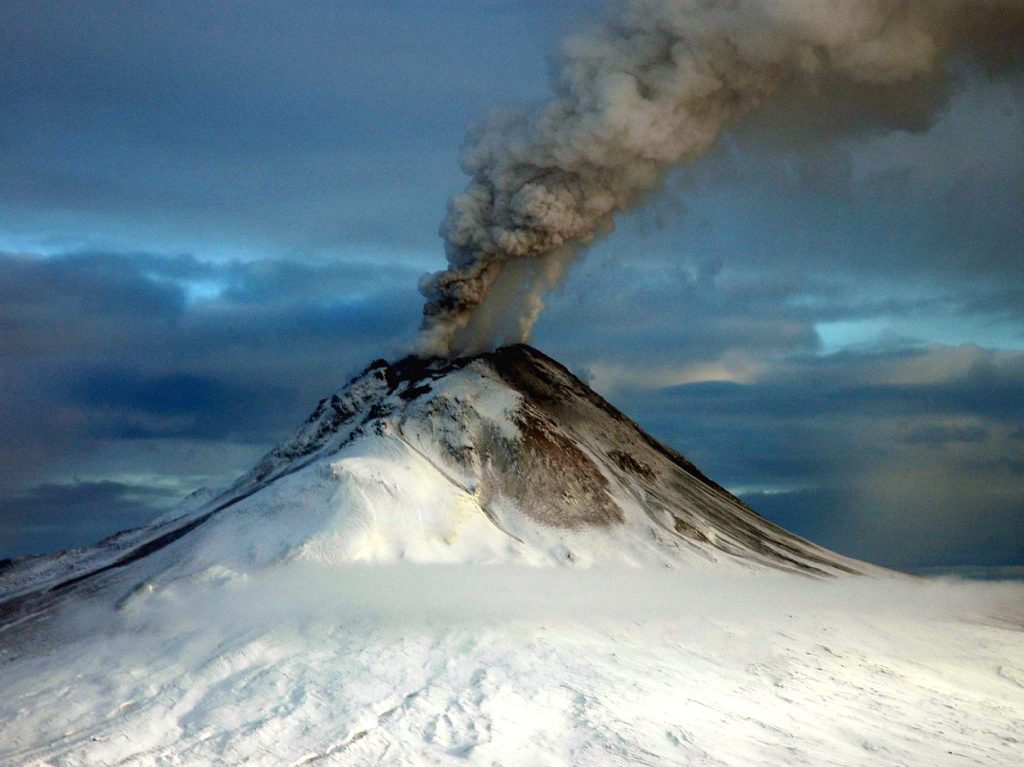Alaska governor Mike Dunleavy recently gutted his state’s budget by over $440 million with a slew of line-item vetoes. Among them: a 40 percent cut in funding to the University of Alaska, a $58 million cut to the state’s Medicaid program, and deep slashes to senior benefits, homeless services, low-income legal services, early education programs, and women’s shelters.
Dunleavy argues that the vetoes are necessary if he’s going to follow through on his campaign promise of restoring the state’s Permanent Fund Dividend (PFD) to its full statutory amount, which this year would provide a $3,000 check to every Alaskan. His framework: either social spending gets gutted or the PFD goes away.
This is of course a ridiculous lie. The state’s $1.2 billion budget deficit could be immediately closed with a move as simple as eliminating the $1.2 billion in deductible tax credits that will be lost to oil companies this year. It’s also worth remembering that Alaska is one of just two states with neither an income tax nor a sales tax, meaning it forgoes hundreds of millions of dollars in revenue each year.
And yet rather than calling for a progressive income tax or an end to oil tax credits, many of Alaska’s liberals have chosen to play into the governor’s game of austerity by turning against the PFD. A majority of Democratic legislators in the state support slashing the dividend by $1,400 as an alternative to Dunleavy’s cuts. Alaska’s largest newspaper now regularly publishes op-eds attacking the dividend, while memes abound on social media accusing its supporters of selfishly wanting a flat-screen TV more than a well-funded university.
These critics are justifiably outraged at Dunleavy’s cuts, which will severely harm the poorest and most vulnerable Alaskans. What they don’t seem to realize, however, is that the same is true of a cut to the PFD.
A cut to the PFD is a head tax
The PFD’s biggest strength is its universality. Means-testing plays no role in its payout. This is also what makes any cuts to it extremely hurtful to the poor. While the annual PFD payout might seem like an inconsequential bonus to well-off Alaskans, others rely on it to make rent and buy groceries. In fact, 79 percent of Alaskans call the PFD an important source of income, while the demographics it benefits the most are mothers of young children, unmarried women, women without a college degree, and Alaska Native women. A 2016 study found the dividend reduces poverty in the state by 20 percent.
State Senator Bill Wielechowski — the dividend’s most reliable progressive defender — has correctly described a cut to the PFD as a regressive tax on every Alaskan. As he recently pointed out, cutting the PFD by $1,400 will result in a $5,600 loss in income for a family of four. For a family with considerable wealth, that might not sting too badly. But for an average family with an income of $50,000, the 10 percent loss in income is really going to hurt. For an Alaskan barely making rent, it will be devastating.
Cutting the PFD and slashing state spending are both extremely bad ways to pass a state budget — but the good news is there’s another immediate solution.
Make the oil companies pay
Alaska is the most profitable region in the world for oil companies. Of the $1.12 billion in net profits reported by ConocoPhillips in the first quarter of 2018, $445 million came from Alaska. Nonetheless, in 2013 then-governor Sean Parnell gifted oil companies a generous per-barrel tax credit that reduced the state’s oil revenue by one-third.
This year, the tax credit will cost Alaska $1.2 billion, and Wielechowski projects it will cost the state over $1 billion a year going forward.
Wielechowski introduced a senate bill earlier this year that would eliminate the tax credit program. If passed, the bill would render the current fight over the budget meaningless — but to date it has only one cosponsor. While the tax credits were quite unpopular with Democrats when Parnell instituted them, today the fight to repeal them is practically nonexistent.
If lawmakers want to pass a budget without harming poor and working class Alaskans, they need to abandon their squabble over the PFD and instead throw their weight behind Wielechowski’s effort to end oil tax credits.
Learn to love taxation
While Alaska can solve its short-term budget crisis immediately by ending its oil tax giveaways, it ultimately needs a fairer and more reliable way of funding state spending in the long term.
Alaska currently relies in large part on oil revenue, directing only 25 percent of oil rents and royalties to the Permanent Fund while using the other 75 percent to fund current state spending. Alaska has chosen this volatile approach over a reliable tax structure (again, the state has neither an income tax nor a sales tax).
This has always been a terrible mistake. Alaska should follow the path of Norway, which also runs a social wealth fund seeded by oil rents, and separate its oil wealth from state spending entirely.
State spending should instead rely on general taxation moving forward. Alaskans are typically averse to taxation—recent efforts to implement an income tax failed miserably—but a steeply progressive income tax really is the only way to fairly and consistently fund the state’s budget, and it’s long overdue.
Dunleavy’s austerity is a crime, but so is the idea of cutting the PFD. Alaskans need a new way of funding spending that impacts the wealthiest in the state, rather than the poorest. Ending giveaways to oil companies will solve the short-term crisis, but moving forward the state needs to finally learn to love taxation. Only then will working Alaskans benefit from a generous PFD alongside robust social spending. It’s a difficult political push, but if accomplished it will dramatically transform Alaska for the better.

